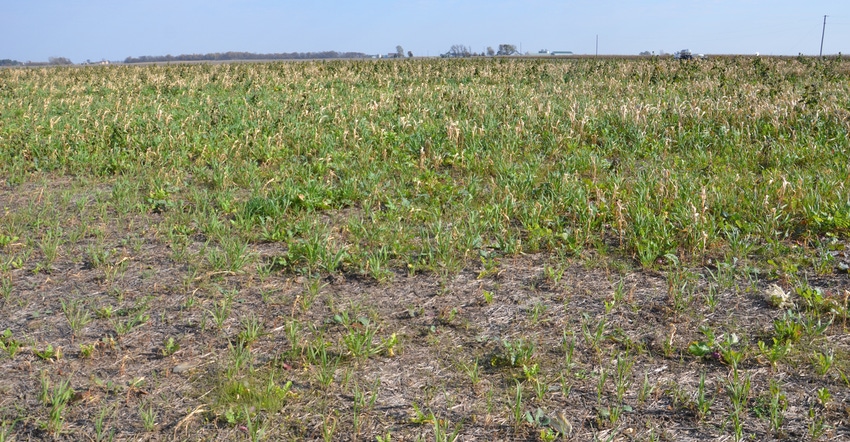
If every acre were covered with living, green plants during fall and winter, less nitrogen would leave fields through tile lines and wind up in streams, rivers and lakes. That’s the conclusion of research by Corey Lacey, a Purdue University graduate student, working with Shalamar Armstrong, a Purdue faculty member in soil and water conservation.
The research team set up a trial with different treatments that represent how farmers in various parts of Indiana and the Midwest typically apply nitrogen for corn during the year. The treatments included fall nitrogen without cover crops, fall nitrogen with cover crops, spring nitrogen without cover crops and spring nitrogen with cover crops.
Fall-applied anhydrous ammonia is not very popular in most of Indiana today, Lacey notes. It’s more prevalent in Illinois and other states. However, a sizable amount of manure containing nitrogen is applied in Indiana in the fall. Some crop farmers without livestock purchase manure from neighbors.
The goal in the trial was 200 pounds of total nitrogen applied per acre per year, Lacey says. The cover crop was primarily cereal rye, seeded at what’s now considered a high rate. “We stayed with [that rate] because it was the norm when we started, although we may lower it in future tests since most people are now seeding around half of what they once seeded,” he explains.
Results are in from 2014 through 2017. Even though they terminated cover crops relatively early before planting, they still saw a significant reduction in nitrogen in tile water when cover crops were included.
“The bottom line is that we saw a 46% drop in nitrogen in water leaving the field in tile when we used cover crops,” Lacey says. “It didn’t really matter whether it was the spring or fall system — we still saw about the same decrease. There is a clear environmental benefit for including cover crops.”
About the Author(s)
You May Also Like




